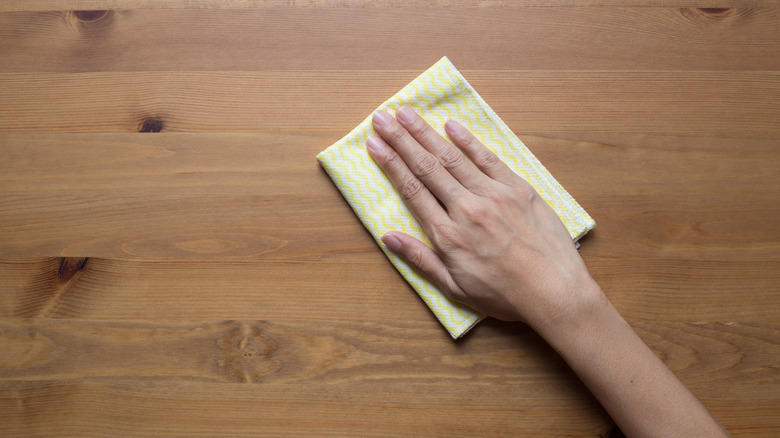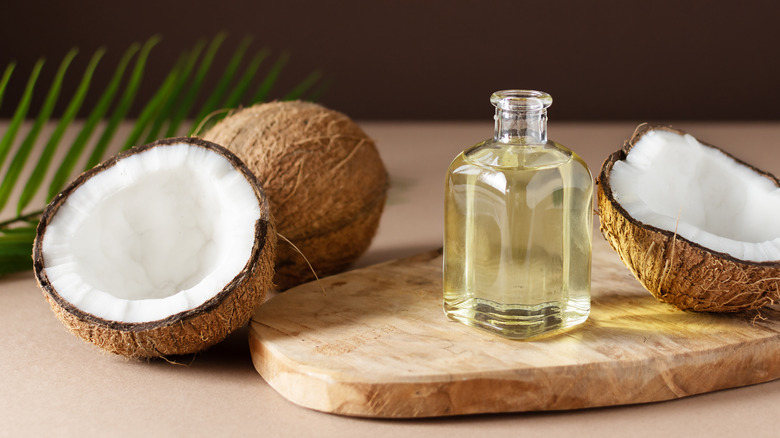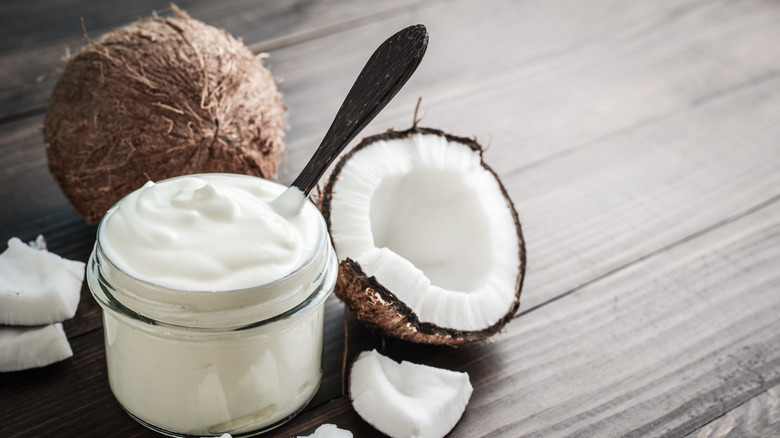The Coconut Oil Hack That'll Leave Your Furniture Shining
Coconut oil has become very popular in recent years for its nutritional value, its many useful benefits in personal care for skin and hair, as well as its multiple applications for pet care. But coconut oil is also useful for various household tasks: it makes a great treatment for natural wood furniture or countertops and can leave them looking shiny and vibrant in just minutes.
Coconut oil is a creamy, waxy substance that comes from coconuts. It is solid at room temperature but turns to liquid as it gets warm. It has rich emollient properties, which allow it to moisturize and soothe skin. These same properties help make it a suitable substance to use on natural wood furniture. Coconut oil's moisturizing qualities help restore shine to natural wood surfaces.
Unlike mineral oil, coconut oil contains no toxic substances. It is also naturally resistant to becoming rancid, so it is a natural preservative as well, helping to not only condition your wood but preserve it as well. It can protect wood from cracking or becoming dry or brittle due to age or sun exposure, so try it on your outdoor furniture, too.
How to treat furniture with coconut oil
This is a very easy and quick fix for dulled wood furniture. First, you'll want to make sure the piece of furniture is clean and free of dust, so dust it with a clean rag first. Then you can apply the coconut oil. Exercise caution if you're doing this on upholstered furniture: coconut oil can leave grease stains on some fabrics, so work carefully to avoid getting any oil on the fabric.
Simply use cotton rags (old but clean cotton shirts are perfect) to apply coconut oil in liquid or solid form. Scoop or pour a small amount onto the rag. You can also add some fresh lemon juice (1/2 lemon to a half cup of oil) for a bright finish. Then rub the mixture slowly into the surface of the wood. If the oil is solidified, you will have to use a bit more effort to rub it in. Do a small area at a time until you have done the whole surface. Wipe the oil in the direction of the wood grain where possible, as this will help you apply the oil evenly.
After 20 minutes, take another clean cotton rag and wipe the whole surface down firmly, starting with the area you applied oil to first, to soak up any excess oil. You can then use a cotton rag to buff the surface by gently but firmly moving the rag in a fast circular motion.
Types of furniture to use coconut oil on
Be sure the furniture you're cleaning with coconut oil is solid wood. Wood can absorb oil, but some composite materials like particle board or plywood may not, and you could end up with a greasy surface. Also, if the wood has a rough surface, coconut oil may not be the best thing to use. You want wood that already has some sort of polished surface. Unfinished wood furniture may be too porous and might absorb too much oil.
Woods that can benefit from coconut oil include any sort of unfinished hardwood, including walnut, mahogany, cherry, oak, teak, maple, rosewood, or ebony. Softer woods like pine may be a bit porous but you can try a small amount to see how it goes. Untreated pine or light-colored woods may look a bit darker in color after you use coconut oil, and in fact, it can be effectively used as a wood stain, with or without a sealant afterward.
You can also use coconut oil to restore shine to your unfinished wood floors, trim and molding, cutting boards, wooden cutlery, and kitchen tools. Using coconut oil on any surface treated with a sealant (such as polyurethane) is not recommended, but if your floor or furniture is finished with a natural oil such as tung oil, then coconut oil can be used occasionally to refresh the surface and help it shine.


